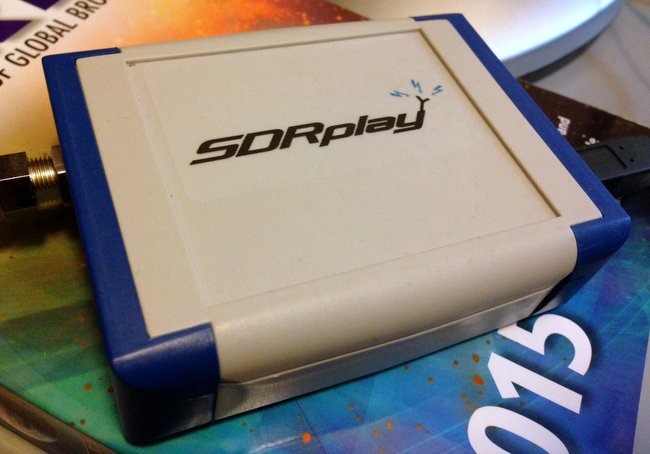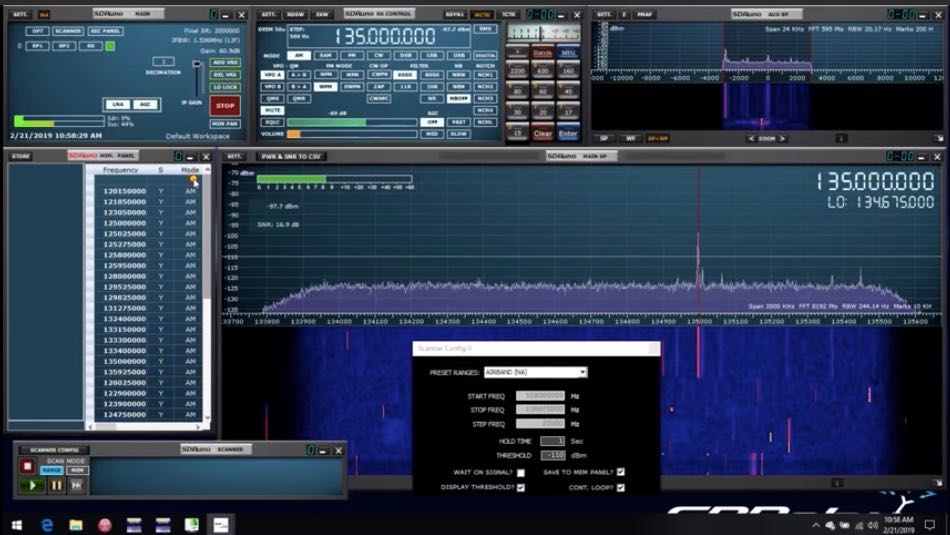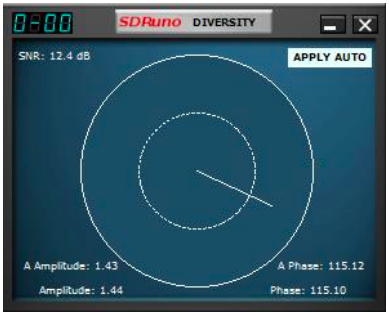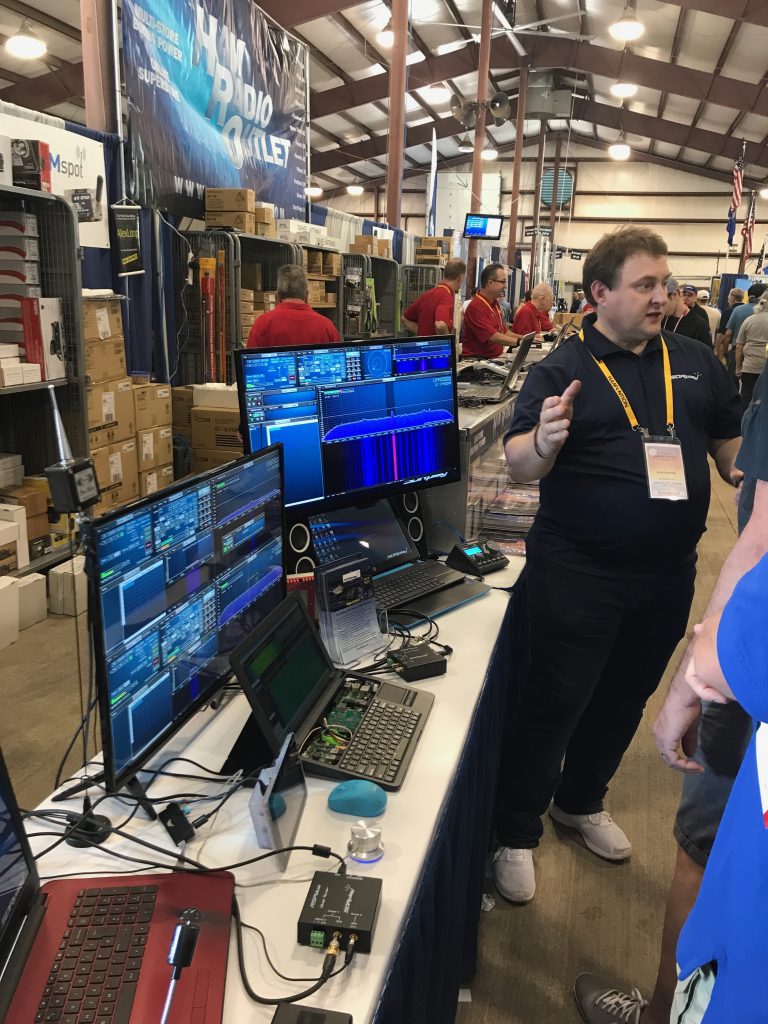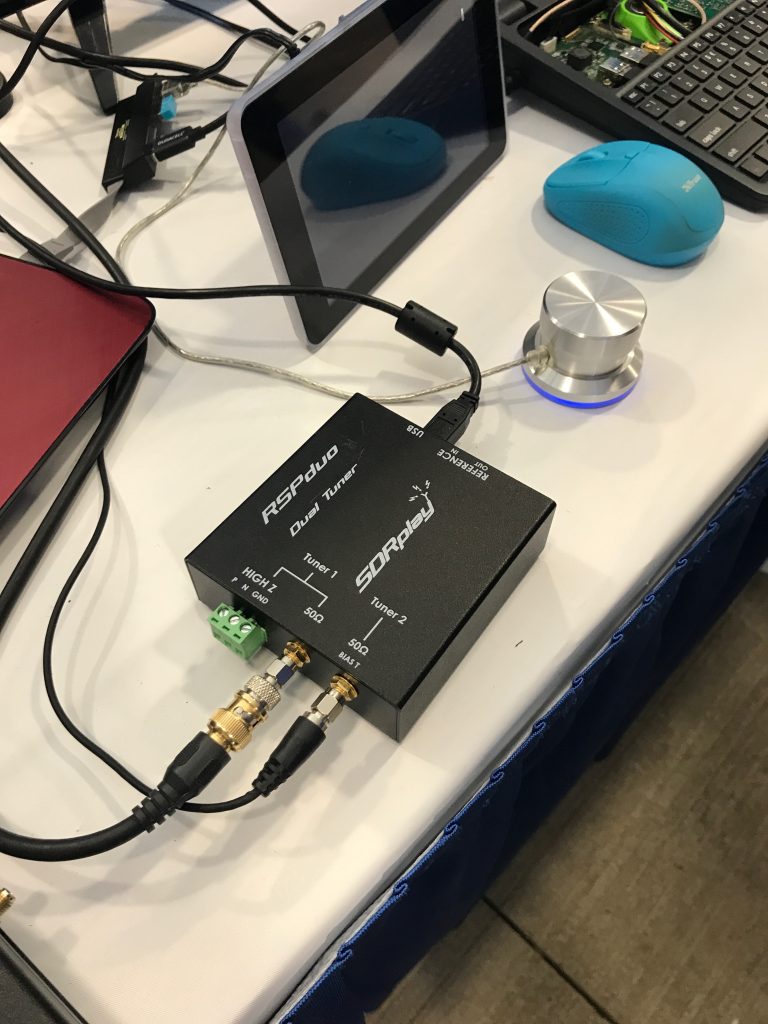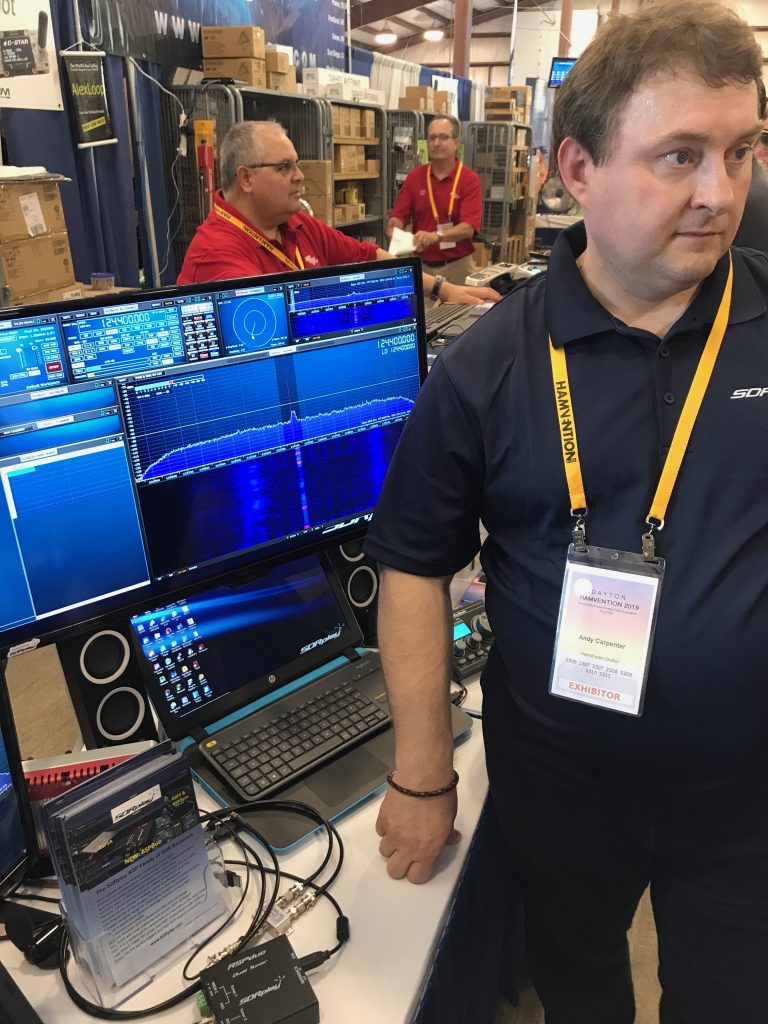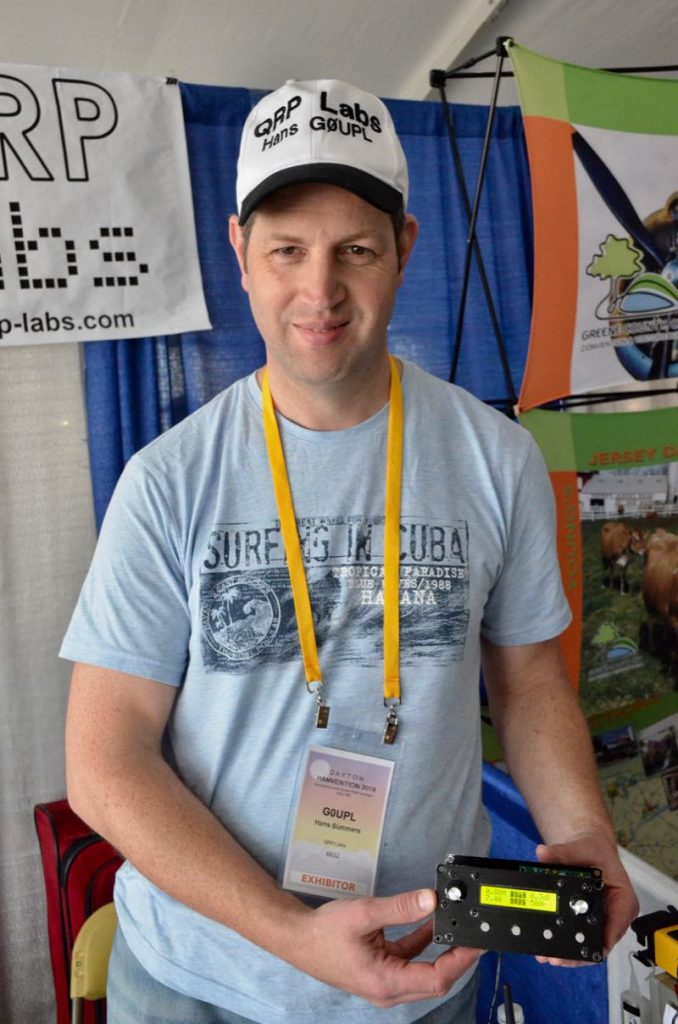
Hans (G0UPL) of QRP Labs holding a QSX transceiver prototype at the 2019 Hamvention
Each year at the Dayton Hamvention I enjoy checking out the latest radio products and services. This year (2019) I found an exceptional number of innovations and will share these in Hamvention Highlights posts. If you would like to check out 2019 Hamvention Highlights as I publish them, bookmark this tag: 2019 Hamvention Highlights
The QRP Labs QSX Transceiver
Hans (G0UPL) of QRP Labs was, without a doubt, one of the most popular guys at the 2019 Hamvention — especially within the QRP community. In fact, at the Four Days In May (FDIM) vendors’ night his table was so busy I didn’t bother trying to force my way through the crowd to speak with him.
As luck would have it, our own table for ETOW was directly across from QRP Labs table at the the Greene County Fairgrounds so, in the end, I spent some quality time with Hans over the course of the Hamvention.
I’ll also make prediction: if the 10 band QSX transceiver delivers what it promises, it will be a serious disruptor in the ham radio transceiver world! This is a good thing. Why?
The QSX is a feature-packed, all-mode, high-performance, affordable, QRP transceiver.
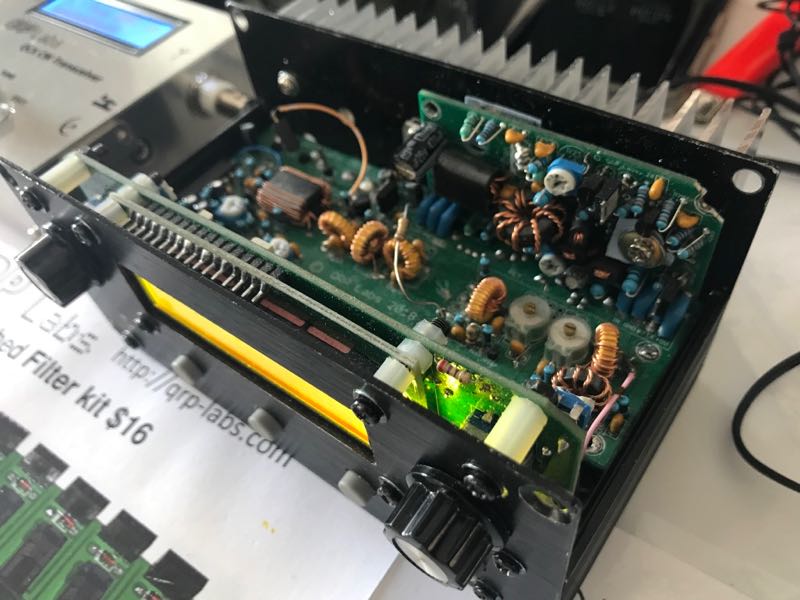
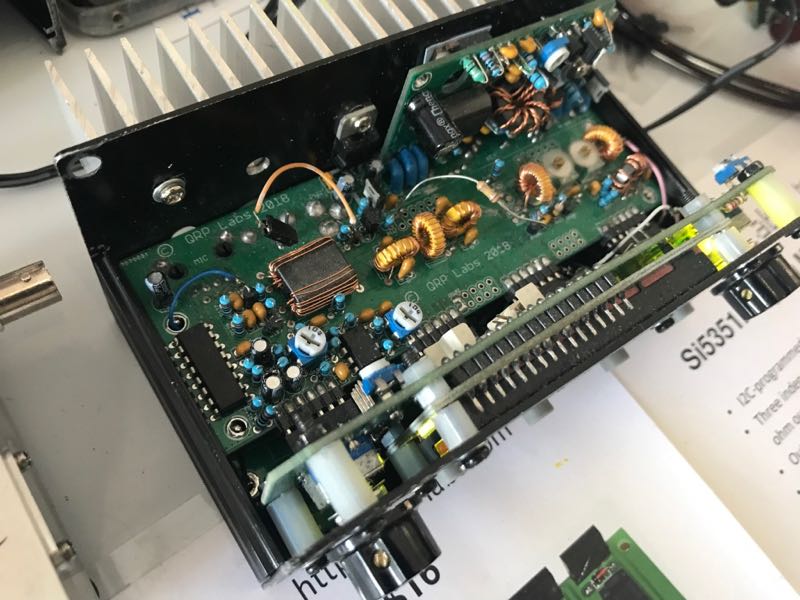
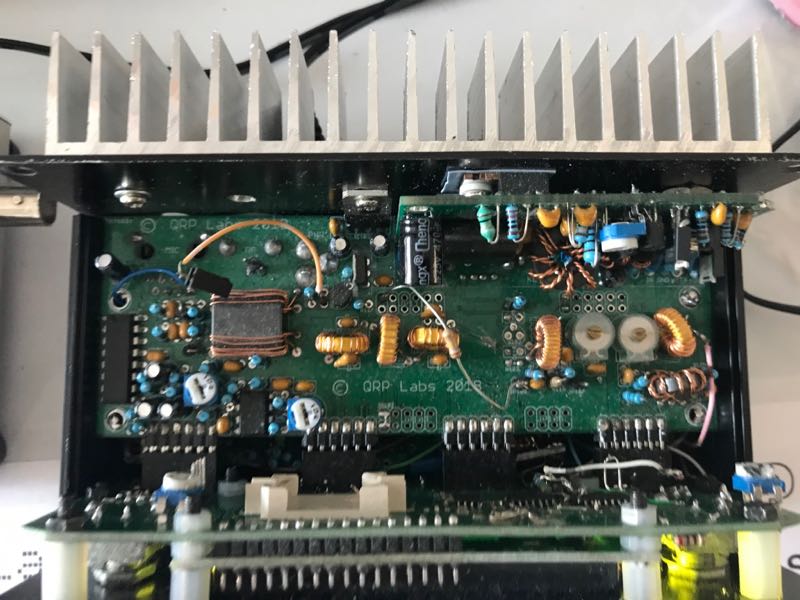
The QSX will have a 24-bit Analog to Digital Converter (ADC) and a 24-bit Digital to Analog Converter (DAC). It will be a fully stand-alone unit and, since it’s an SDR and sports robust DSP, when connected to your PC, it will be recognized as a high-performance sound card. This equates to nearly native digital mode integration without the need for an external sound card interface.
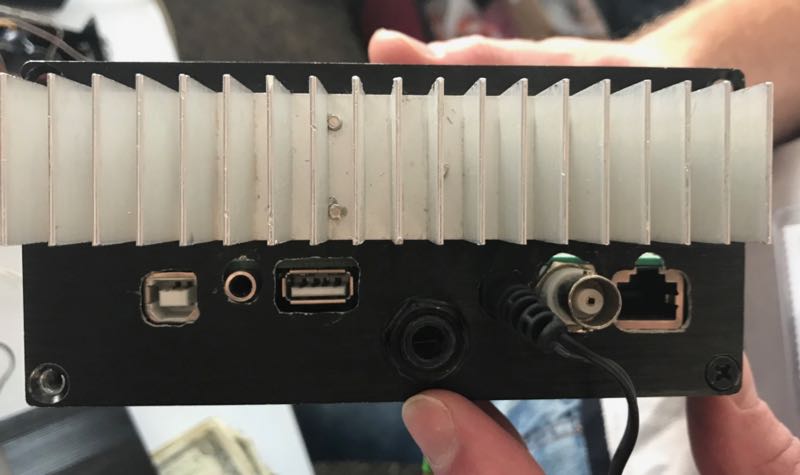
The QSX Prototype Back Panel
The QSX Transceiver will be a through-hole kit with the surface-mounted components pre-installed on the circuit boards. This means the kit should be accessible to anyone with soldering skills.
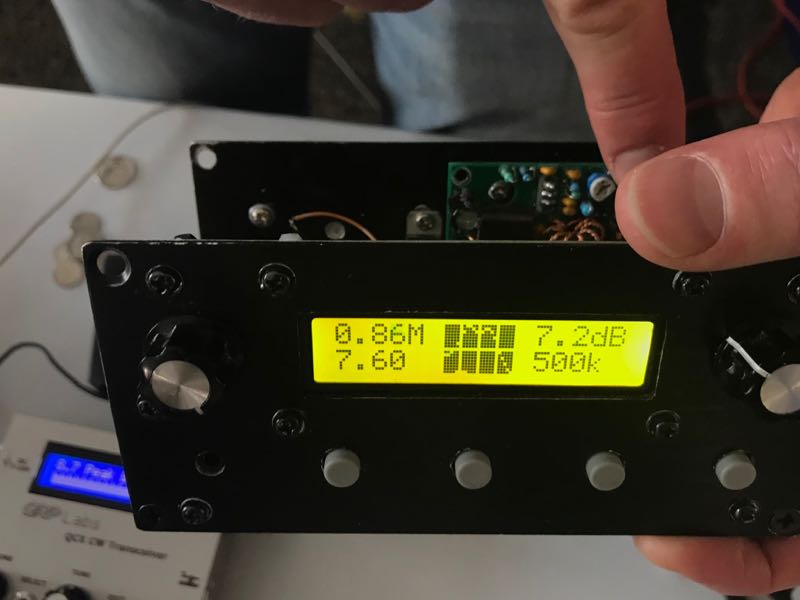
Hans has even managed to include a mini spectrum display on the front backlit LCD panel.
The price? Around $150 US in total for the transceiver kit, 10 band filter module and enclosure. Unbelievable!
If Hans can pull this off — and I feel pretty confident he can — the QSX will set a new bar for QRP transceiver pricing and performance.
If you’d like more details about the QSX transceiver, check out the following resources sent to me by SWLing Post contributor, Pete Eaton:
The 10 band QSX will sport a general coverage receiver and although though the modes supported currently don’t include AM, Hans plans to add AM for at least reception purposes. This could make for a high-performance stand-alone SDR field radio for HF broadcast listening.
Of course, I also see the QSX transceiver as an accessible entry radio for new ham radio operators who are nervous about forking out $800+ for a new HF transceiver.
I will certainly grab the 10 band QSX transceiver kit when it becomes available and review it here on the SWLing Post. Stay tuned!
If you would like to follow other Hamvention Highlights, bookmark the tag: 2019 Hamvention Highlights
Do you enjoy the SWLing Post?
Please consider supporting us via Patreon or our Coffee Fund!
Your support makes articles like this one possible. Thank you!

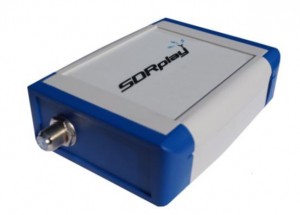 The little RSP1 really disrupted the SDR world. Up to 2014, there were few sub $150 SDRs that included HF reception natively. There were even fewer sub $150 SDRs that I would consider “enthusiast grade”–those that were sensitive, selective, and not prone to overload.
The little RSP1 really disrupted the SDR world. Up to 2014, there were few sub $150 SDRs that included HF reception natively. There were even fewer sub $150 SDRs that I would consider “enthusiast grade”–those that were sensitive, selective, and not prone to overload.
